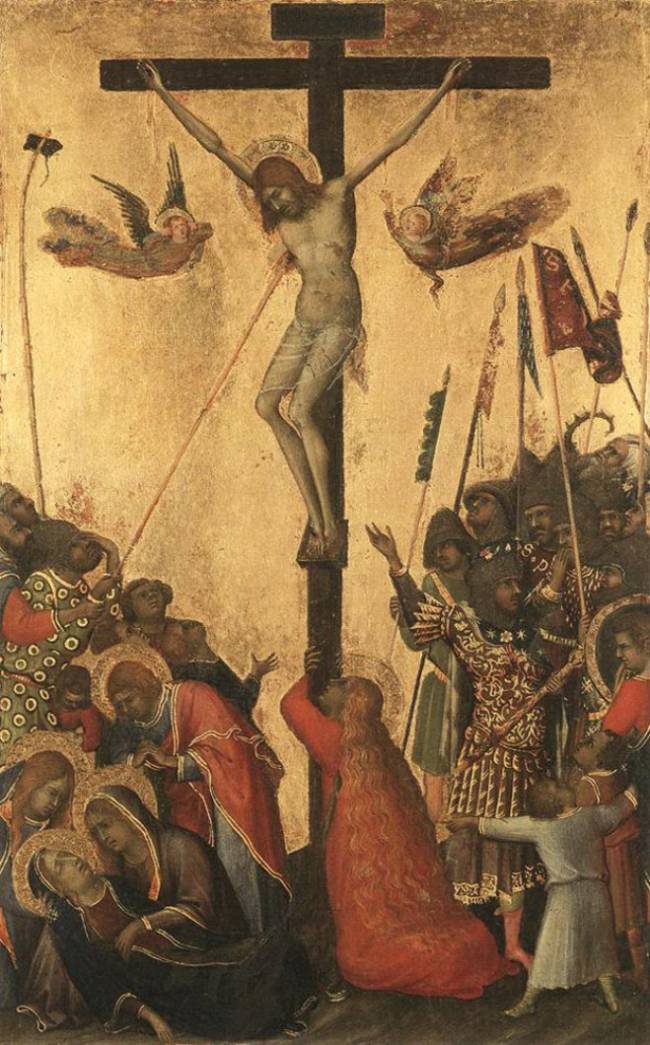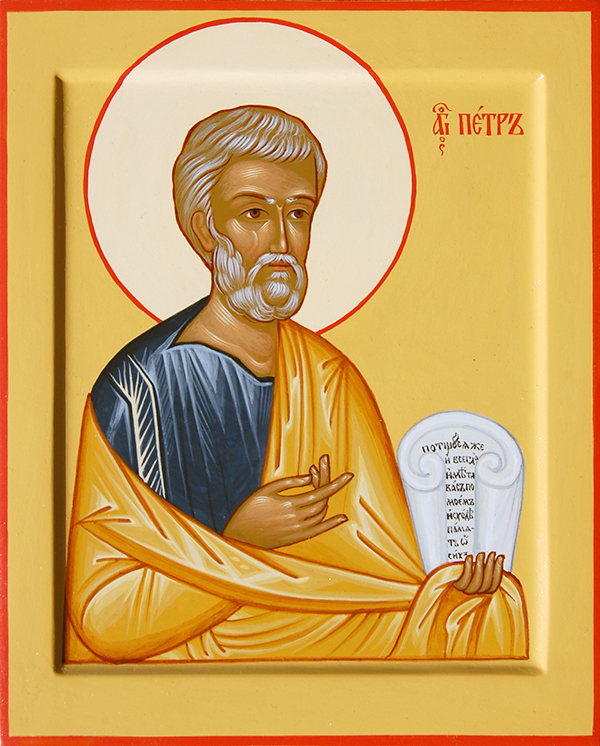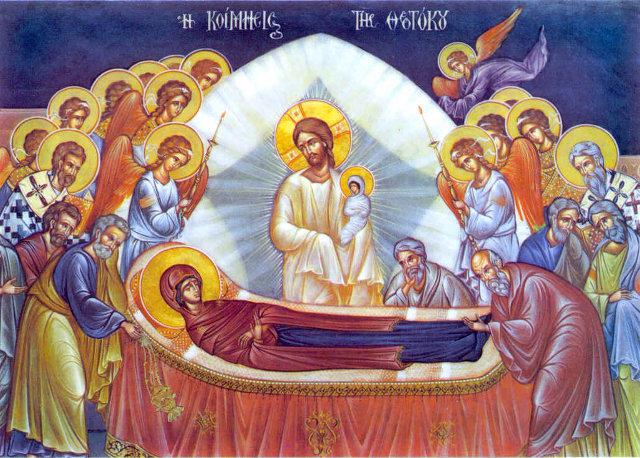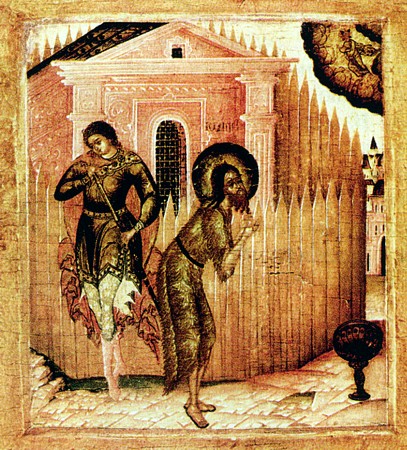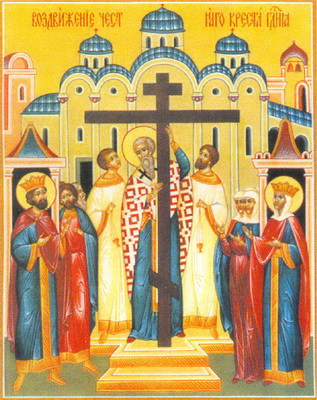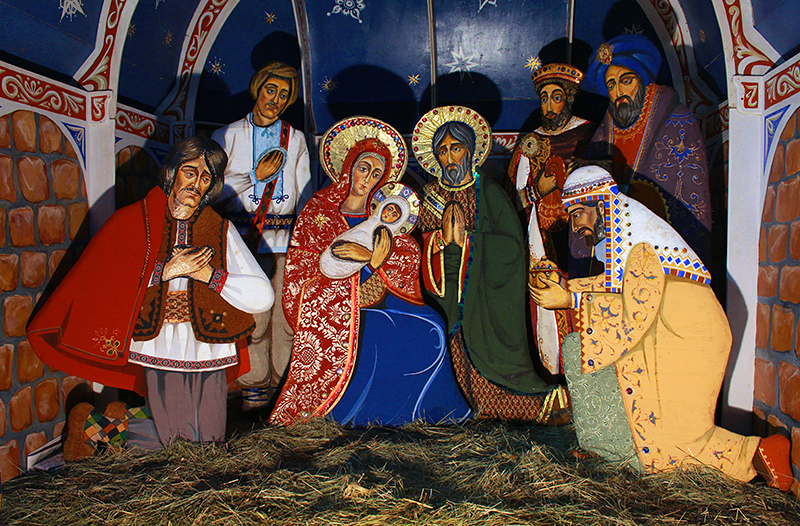2026
-
Great Lent (Or the Great Forty Days): Great Lent actually begins on Clean Monday, 48 days before the feast of Pascha. Great Lent then continues for the next five Sundays: Triumph of Orthodoxy, Holy Relics and St. Gregory Palamas, Veneration of Holy Cross, Commemoration of our Holy Father John Climacus, and the Commemoration of our Venerable Mother Mary of Egypt. Unlike in the West, Sundays are included in the 40 days of Lent. Also, in the Eastern Church, Holy Week is not a part of the 40 days but is considered as a separate entity from the rest of Great Lent.
Great and Holy Week: Holy Week, also called Great and Holy Week begins with Lazarus Saturday, 8 days before Pascha. It then continues with Palm Sunday (the entry of Christ into Jerusalem), Great and Holy Monday which remembers Joseph of the Old Testament who was sold into slavery, Holy Tuesday (the Parable of the ten virgins), Holy Wednesday, (the anointing of Jesus with myrrh by the woman in the house of Simon the Leper), Great and Holy Thursday (the institution of the Eucharist at the Last Supper), Great and Holy Friday (the Passion of Christ) and the last day before Pascha, Great and Holy Saturday.
Week before Lent ("Cheesefare Week"): Meat and other animal products are prohibited, but eggs and dairy products are permitted, even on Wednesday and Friday.
First Week of Lent: Only two full meals are eaten during the first five days, on Wednesday and Friday after the Presanctified Liturgy. Nothing is eaten from Monday morning until Wednesday evening, the longest time without food in the Church year. (Few laymen keep these rules in their fullness). For the Wednesday and Friday meals, as for all weekdays in Lent, meat and animal products, fish, dairy products, wine and oil are avoided. On Saturday of the first week, the usual rule for Lenten Saturdays begins (see below).
Weekdays in the Second through Sixth Weeks: The strict fasting rule is kept every day: avoidance of meat, meat products, fish, eggs, dairy, wine and oil.
Saturdays and Sundays in the Second through Sixth Weeks: Wine and oil are permitted; otherwise the strict fasting rule is kept.
Holy Week: The Thursday evening meal is ideally the last meal taken until Pascha. At this meal, wine and oil are permitted. The Fast of Great and Holy Friday is the strictest fast day of the year: even those who have not kept a strict Lenten fast are strongly urged not to eat on this day. After St. Basil's Liturgy on Holy Saturday, a little wine and fruit may be taken for sustenance. The fast is sometimes broken on Saturday night after Resurrection Matins, or, at the latest, after the Divine Liturgy on Pascha.
Wine and oil are permitted on several feast days if they fall on a weekday during Lent. Consult your parish calendar. On Annunciation and Palm Sunday, fish is also permitted. -
Тhe length of the Fast is variable, being determined by the date of Pascha (Easter). Eight weeks after Pascha comes the Sunday of The next day, Monday, the Fast of the Holy Apostles begins
Having rejoiced for fifty days following Pascha (Easter), the Resurrection of Jesus Christ, the Apostles began to prepare for their departure from Jerusalem to spread Christ's message. According to Sacred Tradition, as part of their preparation, they began a fast with prayer to ask God to strengthen their resolve and to be with them in their missionary undertakings.
The scriptural foundation for the Fast is found in the Synoptic Gospels, when the Pharisees criticized the apostles for not fasting, Jesus said to them, "Can the children of the bridechamber mourn, as long as the Bridegroom is with them? But the days will come, when the Bridegroom shall be taken from them, and then shall they fast. In the immediate sense, Christ was referring to his being taken to be crucified; but in the wider sense it is understood in terms of his Ascension into heaven, and his commission to preach the Gospel, which can only be accomplished with prayer and fasting.
The tradition of the Fast has existed at least since Pope Leo I (461 AD), as is evidenced by his homilies, though it has subsequently been forgotten in the West. The Fast is thought to have been instituted out of thanksgiving to God for the witness of the apostles of Christ. With this Fast, believers express their thanks for the apostles' endurance of persecution during their mission. -
Dormition is one of the Twelve Great Feasts of the Christian faith.
The word 'Dormition' simply means 'falling asleep' – the biblical idiom for a believer’s death The Tradition of the Church is that Mary died as all people die, not “voluntarily” as her Son, but by the necessity of her mortal human nature which is indivisibly bound up with the corruption of this world.
For the first fourteen days of August during each year, the Holy Orthodox Church enters into a strict fast period in honor of the Mother of God, the Virgin Mary.
Every Orthodox Christian is aware and generally knows the reason behind the fasts for Pascha and Christmas. But while they may know of the Dormition Fast, few follow it, and more than a few question why it is there, neither knowing its purpose.
First, given the pervasive misunderstanding of the purpose of fasting itself, a refresher on its purpose is always a good idea. There is a perception that we should fast when we want something, as though the act of fasting somehow appeases God, and seeing us "suffer" gets Him to grant our request. Nothing can be further from the truth. It is not our fasting that pleases God, it is the fruits of our fast (provided we fast in the proper mind set, and do not merely diet) that please Him.
The Feast of the Dormition is preceded by a two-week fast, referred to as the Dormition Fast. From August 1 to August 14 (inclusive) Orthodox and Eastern Catholics fast from red meat, poultry, meat products, dairy products (eggs and milk products), fish, oil, and wine. The Dormition Fast is a stricter fast than either the Nativity Fast (Advent) or the Apostles' Fast, with only wine and oil (but no fish) allowed on weekends. As with the other Fasts of the Church year, there is a Great Feast that falls during the Fast; in this case, the Transfiguration (August 6), on which fish, wine and oil are allowed.
The Birth-Giver of God (Theotokos), the Virgin Mary, was "blessed amongst women," and she was chosen "to bear the Savior of our souls." Orthodox Christians consider her to be the Queen of all the saints and angels. -
The Beheading of Saint John the Baptist, a Feast day established by the Church, is also a strict fast day because of the grief of Christians at the violent death of the saint. In some Orthodox cultures pious people will not eat food from a flat plate, use a knife, or eat food that is round in shape on this day.
Salome, the daughter of Herod, danced before the guests and charmed Herod. In gratitude to the girl, he swore to give her whatever she would ask, up to half his kingdom. The vile girl on the advice of her wicked mother Herodias asked that she be given the head of John the Baptist on a platter. Herod became apprehensive, for he feared the wrath of God for the murder of a prophet, whom earlier he had heeded. He also feared the people, who loved the holy Forerunner. But because of the guests and his careless oath, he gave orders to cut off the head of Saint John and to give it to Salome.
The commemoration of the beheading of John the Baptist is observed with the Divine Liturgy of Saint John Chrysostom which is conducted in the morning and preceded by a Matins service. -
The day of the Elevation of the Cross became, as it were, the national holiday of the Eastern Christian Empire similar to the Fourth of July in the United States. The Cross, the official emblem of the Empire which was placed on all public buildings and uniforms, was officially elevated on this day by the bishops and priests. They blessed the four directions of the universe with the Cross, while the faithful repeated the chanting of “Lord have mercy.” This ritual is still done in the churches today after the solemn presentation and elevation of the Cross at the end of the Vigil service of the holy day following the Great Doxology of Matins.
This feast, though extremely festive, is a strict-fast day, due to the nature of what is being celebrated, the Cross. We commemorate the Cross every Wednesday and Friday each week, which is why we fast on those days too. -
During the Nativity Fast, Orthodox Christians perpare for the celebration of the Nativity of Christ. The word “nativity” means “birth.” In western countries, this day became known as Christmas (Christ’s Mass) because it is a day when religious services (which some churches call a “Mass” and we call the “Liturgy”) are held to celebrate the birth of Christ, the Son of God, our Savior.
We know that in the present-day secular American tradition, the “holiday season” begins in November (usually the day after Thanksgiving). The Nativity Fast occurs at the same time as the secular American “holiday season.” But its it is a lot different in its meaning from secular “holiday” celebrations and traditions.
The original meaning of the word “holiday” actually was “Holy Day,” a sacred day to glorify God and His Saints. The Nativity Fast is meant to get us ready, not for a present-opening party, but for a celebration of the birth of Christ.
In many Christian churches, several weeks prior to Christmas are known as Advent, from a Latin word that means “coming.” In the Orthodox Church, this season of preparation for the Nativity of Christ always begins on November 15, the day after the Feast of the Apostle Philip. For this reason it is known as St. Philip’s Fast.
This special period lasts 40 days, the same as Lent, and it is therefore sometimes called the Winter Lent. Similar to the period of Great Lent, the Nativity Fast was established by the Church as a time for repentance. If we look around in the church during this time, we do not yet see the Christmas colors of red, green, white, silver, and gold. During the Nativity Fast, we see vestments and cloths that are purple, a color that is a symbol of repentance.



